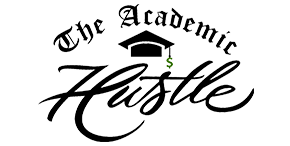At The Academic Hustle, we believe in a future where college is not just a destination but a journey towards independence, global exposure, and...
How One Family Graduated Debt-Free from Howard University Using The Academic Hustle Scholarship System
The journey to a debt-free degree is possible, and Chanice’s story is proof. Through strategic planning, hard work, and a bit of guidance from The Academic Hustle Scholarship System, Chanice and her family navigated the financial hurdles of higher education to see her graduate from Howard University without debt.
Here’s how they did it:
1. Starting Early and Thinking Big
- Early Planning: Shanice knew by age 10 that she wanted to attend college. By 15, she was already strategizing on how to make it happen without financial burdens.
- Big Goals: Initially interested in Harvard, Shanice shifted her focus to Howard University after an HBCU tour. This shift meant adjusting their financial strategy, as full scholarships at HBCUs can be harder to secure.
2. Maximizing High School Opportunities
•Dual Enrollment: Chanice took full advantage of dual enrollment courses offered in her school district, earning her Associate’s Degree before even graduating high school. This bold move saved her family about $100,000 in college tuition.
•Strategic Curriculum: The family ensured that Chanice’s high school curriculum aligned with the admissions requirements of top colleges, particularly Howard.
3. Leveraging Scholarships and Fellowships
Partial Scholarships: Although Chanice didn’t secure a full scholarship initially, she received over $20,000 in aid from Howard University.
Fellowships: Chanice built strong relationships with her professors, leading to opportunities like a $30,000 fellowship, significantly reducing her overall costs.
4. Developing Relationships
•Proactive Networking: Chanice didn’t just take classes—she actively engaged with her professors, attended office hours, and expressed genuine interest in their work. These relationships opened doors to research opportunities and additional funding.
•Advocating for Herself: When facing a $2,000 balance, Chanice persistently worked with the financial aid office, refusing to settle for loans. Her efforts paid off when the university found a scholarship to cover the full amount.
5. Strategic Application of Effort
- •Focused Applications: Chanice didn’t scatter her efforts applying for every available scholarship. Instead, she targeted those aligned with her passions, such as social justice and civil rights, increasing her chances of success.
- •Research and Organization: Keeping track of scholarships, internships, and deadlines through a detailed spreadsheet was key to Chanice’s organized approach.
When you apply to different things like college or scholarships, the people who are reading your application like to see themes—something that represents you overall as a person. The things that you do have to be done with intention and purpose.
6. Continuous Growth and Future Planning
•Internships and Work Experience: During her time at Howard, Chanice pursued internships that aligned with her career goals, including work with the NAACP Legal Defense Fund and the United Nations Foundation.
•Gap Year for Law School Prep: After graduation, Chanice plans to take a gap year to study for the LSAT and apply early to law schools, positioning herself for scholarships and future success.
Key Takeaways for Parents and Students
1. Start Early: The earlier you begin planning and aligning high school coursework with college goals, the better.
2. Be Strategic: Focus on scholarships and opportunities that align with your child’s strengths and interests.
3. Develop Relationships: Encourage your child to engage with their professors and the financial aid office to uncover hidden opportunities.
4. Stay Organized: Use tools like spreadsheets to keep track of deadlines, applications, and results.
Related Posts
Quis ipsum suspendisse ultrices gravida. Risus commodo viverra maecenas accumsan lacus vel facilisis. Lorem ipsum dolor sit amet, consectetur adipiscing elit, sed do eiusmod...



